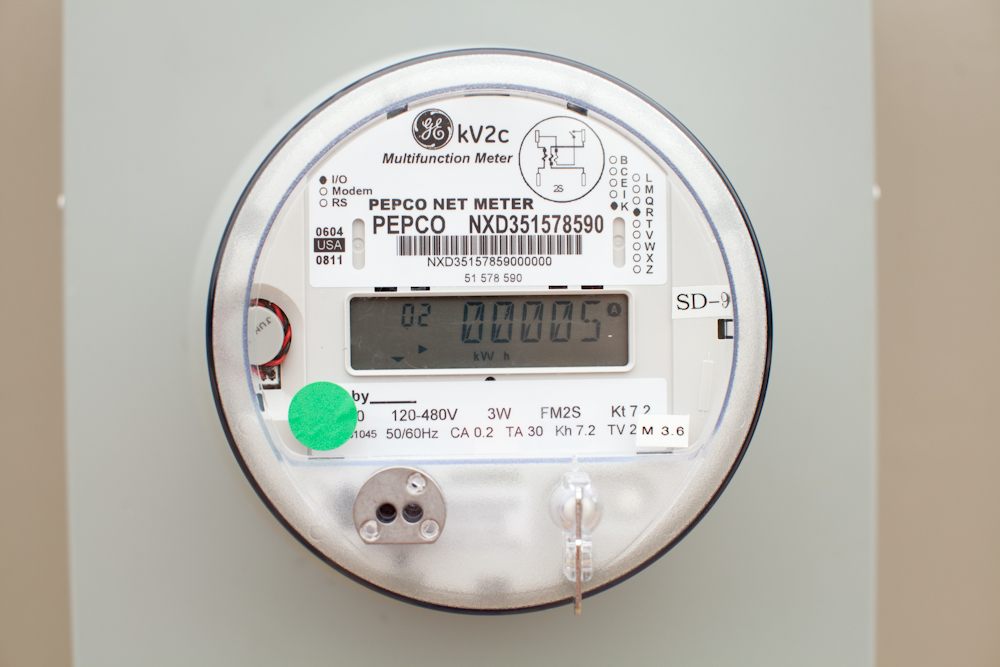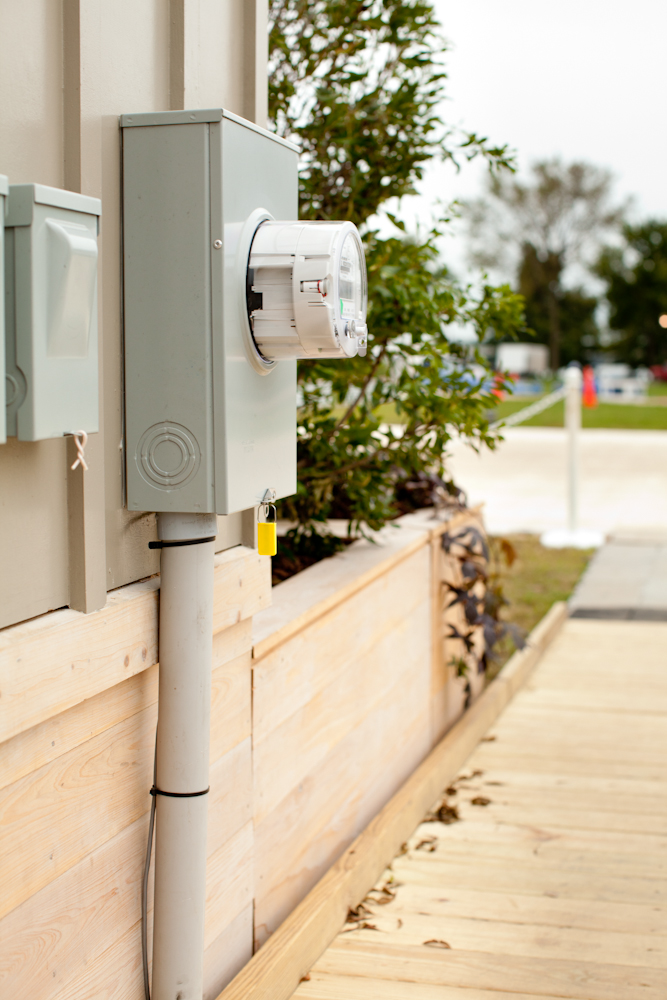Energy Balance Contest Rewards Teams for Producing Only the Energy They Need
Friday, September 23, 2011By Carol Anna
One of the 10 contests in the U.S. Department of Energy Solar Decathlon 2011, Energy Balance measures the net energy each house produces or consumes over the course of the competition.
The Energy Balance Contest simulates how most residential solar electric systems work today. Each team house is equipped with a bidirectional utility meter that enables power flow to and from the electric utility. When the sun shines, the house’s solar electric system produces electricity. If the system produces more electricity than the house needs, the excess electricity flows backward through the meter to the grid. At night, when the solar electric system is not producing electricity and the refrigerator is running, for example, the house consumes electricity from the grid, and the meter runs forward. To achieve a zero meter reading at the end of the competition, the solar electric system has to produce as much energy as the house consumed.


These photos of the Team Tidewater Virginia smart meter, taken on opening day, indicate the team had generated 5 kW hours of electricity in the first hours following the start of the competition. (Photo from Lachlan Fletcher, Studio 18a)
“In 2011, we changed the rules to reduce the incentive for producing a surplus amount of energy,” said Richard King, Solar Decathlon director. “Instead of awarding bonus points for excess electricity generation, like we did in the 2009 competition, we are rewarding teams for producing only what they need.”
Having a rainy day like today changes the dynamics of the teams’ strategies. All the teams have planned on one or two days of cloudy weather out of the 10-day competition. When a cloudy day comes on the first day, it becomes very strategic to try to predict how many other cloudy days loom ahead.
“A key to success will be having a good weatherperson on the team,” Richard said. “If a team feels confident that the weather will become sunny, it’s easier to strategize whether to conserve energy or operate the house normally.”
If you want to see the teams’ strategies, watch the Hot Water, Appliances, Home Electronics, and Comfort Zone contests to see if the students are holding back on expending energy.
Carol Anna is the communications manager of the U.S. Department of Energy Solar Decathlon.
Tags: Competition, Contests, Energy Balance, Solar Decathlon, Solar Decathlon 2011
